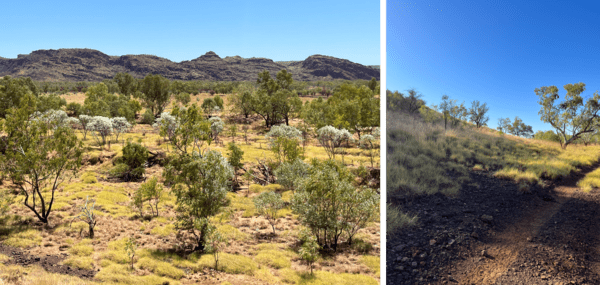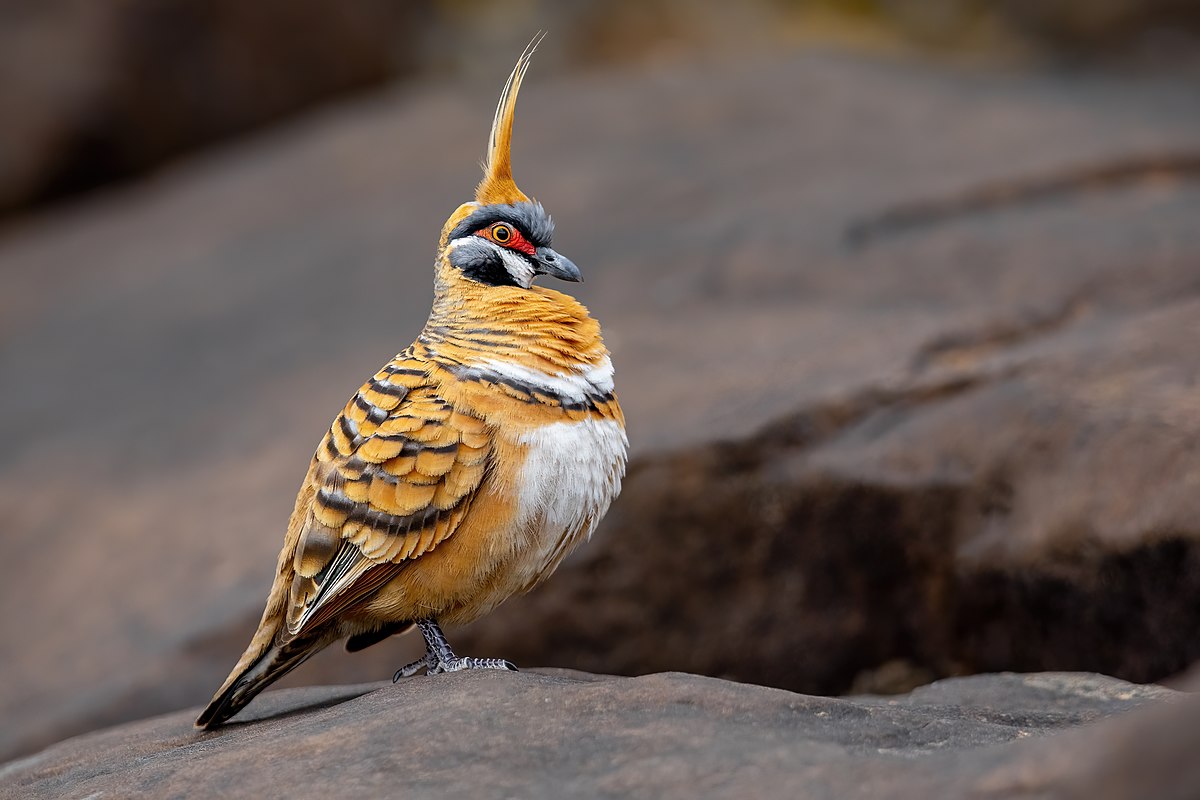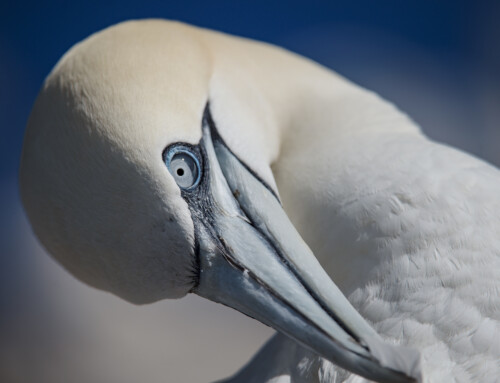
LINKED PAPER
The difficult challenge of accurately recording iris colour in birds revealed through the lens of specimens of Australia’s Spinifex Pigeon Geophaps plumifera. Joseph, L., Drew, A., Wilson, C., Teh, J., Viacava, P., Schodde, R. 2023. IBIS. DOI: 10.1111/ibi.13272. VIEW
Have you ever wondered about how a lapse of concentration when recording data could lead to an error going unnoticed, possibly for decades? For example, a lapse of concentration in geocoding old museum specimen data or mis-selecting a species name from a dropdown menu, which could result from a distraction as banal as not taking regular breaks, or having to answer a phone, or by someone cracking a joke nearby. The lapse can go unnoticed until some kind of meta-analysis detects it, possibly decades later, using data gathered from a century or more of field observations, bird-banding records, or museum specimens. That lapse of years ago could be a record of a small desert bird from inland Australia geocoded as coming from the middle of the Pacific Ocean.
I think of this as a bit like a time bomb finally exploding. These time bombs not only reveal the simple but far-reaching error and how it can be corrected, but it also makes us think about how we can avoid these lapses in future.
In a casual conversation during the COVID pandemic in 2020, my predecessor as Director of the Australian National Wildlife Collection (ANWC) and co-author on this paper, Richard Schodde, remarked that while researching the taxonomy of Spinifex Pigeons, Geophaps plumifera, he thought he could hear the loud ticking of one of these time bombs. It concerned a series of 15 specimens at the ANWC of the Rufous-bellied subspecies, Geophaps plumifera ferruginea. The birds were collected in 1970 at the Grant Range in the Kimberley region of Australia’s far north-west. He suspected that iris colour had been recorded and databased in error as “yellow” in the series.
Something here certainly didn’t ring true. Rufous-bellied G. p. ferruginea is well-known as having an orange or red iris, whereas the two White-bellied subspecies, G. p. plumifera and G. p. leucogaster, have yellow irides.
“Yellow and orange are similar”, I hear you say? Yes, that’s true, but is my orange your yellow, or worse, is my orange-yellow your yellow-orange? What does a future analysis make of this? How does ornithology get away from these subjective descriptions?
“Yellow iris could be feasible in the Grant Range”, I hear you add. Yes, the Grant Range population, while definitely Rufous-bellied, is geographically and even slightly intermediate phenotypically relative to the “core” populations of the Rufous-and White-bellied subspecies. There is, after all, quite a literature on geographical variation in these birds summarised in our paper. Yet one just has to look at eBird’s hundreds of photographs of these birds or a good field guide to Australian birds to see that there was good reason to be cautious.

Figure 1. White-bellied Spinifex Pigeon (left © JJ Harrison BY-SA 3.0 WikimediaCommons) versus Red-bellied Spinifex Pigeon (right © John Edmond).
This got under my skin – nobody wants erroneous data associated with specimens. One of many important justifications for collecting specimens is that we have an opportunity to thoroughly and carefully record colours of soft or bare parts while they are fresh. That benefits ornithologists and illustrators of birds in field guides and reference books.
A return visit to the Grant Range was needed but my heart sank a little when I looked at a map. I live in Canberra in south-eastern Australia and the Grant Range is diagonally opposite on the other side of the continent, just 4,800 kilometres away by road. Getting there wouldn’t be easy. The pandemic was on and field work was impossible.
Finally, in September 2022, we could do ANWC field work that had been postponed but for which we had relevant permits in place. The Looma Indigenous Community nestled at the foot of one of the cliffs in the Grant Range and near the town of Camballin kindly allowed us to work on their land. The Spinifex Pigeons are well-named as they are common in the abundant suitable habitat of spinifex close to and on the rocky ranges.

Figure 2. The Great Range with an abundance of spinifex (the yellowish tussock grass) © Leo Joseph.
We confirmed that the Grant Range birds’ irides are as orange as the day is long, certainly not yellow. Later, in February 2023, while on a visit to the American Museum of Natural History in New York, I found an old specimen from the Grant Range collected in 1902! Its label clearly said “red” for the iris.
Can we be certain that “yellow” iris colour for the 1970 specimens is wrong? No, we can’t, and our paper discusses (but dismisses) a number of possible explanations relating to gene flow, genetic polymorphism, and age-related variation. The weight of data clearly cautions anyone using “yellow” for that series of specimens’ iris colour.
Just one of the two researchers involved in 1970, Bill Martin, survives. Through his patient and kind tolerance of being questioned about that long-ago work, we have deduced that Bill was almost certainly preoccupied preparing the specimens before they spoiled in tropical heat. The other, more senior collector probably noted the colours of the soft parts. Our paper explains how and why we think it possible that the real culprit here may have been fatigue after a month of gruelling field work in tropical heat. All of that involved white-bellied populations with yellow irides.
What of the even deeper issue, the dreaded subjectivity with which ornithologists have noted soft parts’ colours for centuries? Is an iris chestnut or reddish brown? Is bare ocular skin red with a tinge of blue or blue with some red? Can we develop more accurate and repeatable ways of describing these colours?
In short, this is a seriously intransigent issue. No clear answers are available yet. Glimmers of solutions are appearing, however, which you can read about in our paper. Handheld hyperspectral smartphone technology (Stuart et al. 2021) is one such prospect. We hope that such devices may soon be available to control for the myriad variables that plague field work in this area. Eventually, we may record soft parts’ colours in reflectance curves instead of qualitative words like “dark brownish chestnut”.
Some key points for the future here are that as ornithologists we must be on the ball and think about where we are doing our field work (e.g., a remote, little-studied area or a university campus), with which species we are working (thoroughly studied for decades or little known), and what is and isn’t known reliably about a species or its various populations. Our data today must at least reassure workers tomorrow about which colour(s) was/were not involved. This aspect has often been overlooked.
References
Stuart, M.B., McGonigle, A.J.S., Davies, M., .Hobbs, M.J., Boone, N.A., Stanger, L.R., Zhu, C., Pering, T.D., Willmott, J.R. 2021. Low-cost hyperspectral imaging with a smartphone. J. Imaging 7:136. VIEW
Image credits
Top right:White-bellied Spinifex Pigeon © JJ Harrison BY-SA 3.0 WikimediaCommons.
Blog posts express the views of the individual author(s) and not those of the BOU.
If you want to write about your research in #theBOUblog, then please see here




